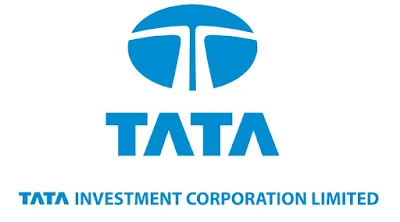Introduction: Why Tata Investment Share Price Matters
When investors search online for “Tata Investment share price today” or “Tata Investment Corporation stock update,” they're looking for more than just a number. They want live data, stock performance insights, valuation metrics, technical trends, and future outlook—so here’s everything in one place.
1. What is the Current Tata Investment Share Price?
- As of late June 2025, Tata Investment Corporation’s share price is hovering around ₹6,830 on the NSE/BSE .
- The day’s trading range typically lies between ₹6,675–₹6,868 .
- Over the past year, the price has fluctuated between a low of ₹5,145 and a high near ₹8,075 .
2. Live Stock Data: Quick Snapshot Here are real-time metrics investors look for:
Metric Value
- Current Price ₹6,830 (approx.)
- 52-Week Low/High ₹5,145 / ₹8,075
- P/E Ratio (TTM) ~109
- P/B Ratio ~1.1
- EPS ₹61.68
- Dividend Yield ~0.4%
- Market Cap ₹34,000–34,500 Cr
3. Historical Performance & Share Price Returns
- 1-Day: +0.3–1.1%
- 1-Week: ~2.9–5.7%
- 1-Month: ~7–9%
- 3-Month: around 4–8%
- 1-Year: ~5–150% depending on the timeframe .
- 3-Year: ~71–408%
- 5-Year: ~54–783% .
- These figures vary by source, but all point to strong long-term growth.
4. Why Such Price Fluctuations?
A) Holding Company Valuation- Tata Investment Corporation (TICL) is a longstanding holding/investment company, managing stakes in 85+ companies—both Tata and non‑Tata .
- Holding company valuations often:
- Trade at a discount to NAV (book value).
- Fluctuate based on NAV changes and group news/investor sentiment .
- Significant market events—like IPOs (e.g., Tata Technologies, Tata Capital)—impact TICL's share price. For example:
- In Nov 2023, TICL jumped ~20% anticipating the Tata Technologies IPO .
- In Dec 2024, it surged 12% on Tata Capital IPO rumors .
5. Valuation: Is the Tata Investment Share Overpriced or Undervalued?
A) P/E Ratio (~109×)- Much higher than financial services peer average (~35×).
- Historically, net P/E has ranged from ~90 to 130 .
- A high P/E reflects low core earnings (TICL has ~1% ROE) .
- Slightly above its book value (~₹6,144–6,145) .
- Holding companies typically trade below NAV, making this interesting given TICL’s premium.
- These low figures reflect a minimal earnings yield compared to equity investments .
6. SWOT Analysis: Strengths, Weaknesses, Opportunities, Threats
Strengths:- Debt-free structure .
- Diversified portfolio across Tata & non-Tata businesses.
- Steady dividend payer (~0.4% yield) .
- Low ROE/ROCE (~1%) limits earnings growth .
- High P/E suggests overvaluation by earnings standards .
- NAV re-rating if assets (like shareholdings) unlock value via IPOs or buybacks.
- Benefiting from Tata Group asset monetization.
- Holding discounts persist due to low intrinsic business momentum.
- Fluctuations in portfolio company performance can impact valuation.
7. Technical Indicators & Trading Insights
- EMA/SMA: Price is trading above 50- and 200‑day moving averages (~₹6,466 and ₹6,300)
- Support Levels: ₹6,648, ₹6,565, ₹6,455.
- Resistance Levels: ₹6,841, ₹6,951, ₹7,034 .
- RSI/MACD Levels: RSI ~55, indicating neutral to slightly bullish momentum .
- A breakout above ₹6,840–6,950 may signal renewed buying interest.
8. Analyst Views & Market Sentiment
- Algobased rating from 5 paisa suggests poor technical strength (EPS rank C, RS B, Master Score C) .
- Positive catalysts include Tata group IPOs—these frequently deliver share price spikes.
9. Outlook & Future Catalysts
Short-Term Catalysts:
- Strong technical base: a breakout above ₹6,950 opens ₹7,200–7,300.
- Reversion to mean if portfolio companies underperform.
- Pullback to support near ₹6,450–6,550.
Long-Term:
- Watch for NAV unlocks: stake sales in Tata companies, buybacks, or spin-offs.
- Holding discount may shrink if valuations align with book value.
- Conclusion: What Investors Should Do
- Long-term investors: See TICL as a value unlock play, with diversified exposure and potential for NAV re-rating.
- Short-term/traders: Monitor resistance (₹6,950–7,000) and support (₹6,648–6,565). Use technical indicators for entry/exit.



